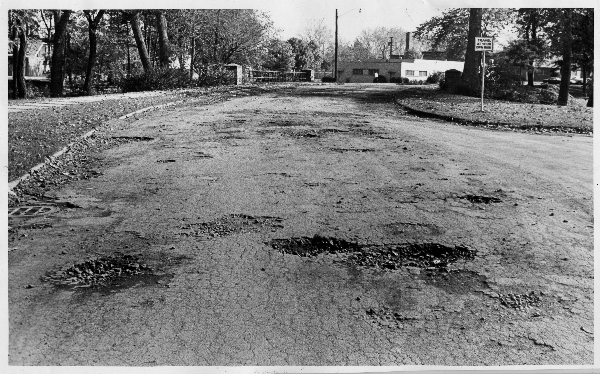Garfield Park

The city of Cleveland bought about 180 acres of land in 1894 to create Newburgh Park. In 1897, the park was renamed Garfield Park after former President James A. Garfield. The park, well known in Cleveland for its natural beauty and its mineral springs, provided many recreational opportunities. The park soon housed facilities for boating, swimming, and playing tennis or baseball. During the winter, visitors often went sledding and ice skating.
But starting in the 1960s, the park began to have problems due to the city's financial inability to maintain it. The once famous spring water became contaminated; the park pool was closed and allowed to deteriorate; and grass and weeds took over the tennis court. Crime in the park increased, though Garfield Heights repeatedly asked for an increased police presence. But the neglect continued, despite community concerns.
This neglect was prolonged until the 1980s, as the city of Cleveland and Garfield Heights fought over and over for solutions to the financial burden that the park had become. Owned by the city of Cleveland since the beginning, the park was now located within Garfield Heights boundaries, which were established later. The city proposed many solutions to the hindrance. It tried to sell the park to Garfield Heights, but the suburb could afford neither the price set by the city nor the cost of taking care of the park. By this time few people used the park, and many considered it an eyesore. Garfield Park had come a long way: once a treasured natural gem, it had become a dangerous eyesore. But the community's desire to keep the park never faded. The issue of the park had become so important to the community that those running for public office in Garfield Heights in the 1970s and 1980s made sure to address its future in their campaigns. Despite the attention, the problem dragged on. And the question remained: what to do with Garfield Park?
There was talk of leasing the park to the Cleveland Metroparks for many years, but it was not until the 1980s that talk turned into action. The Metroparks leased the park from the city of Cleveland in 1986 and began to restore it to its former glory. A nature center was built in 1987, which bustles with activity to this day. The park restored the lake, the marsh, some of the recreational facilities, and the trails, making Garfield Park once more a treasured place for city dwellers and suburbanites to find refuge in nature.
Images






